Reviews
The Split
George Breakston & Kenneth G. Crane
Japan, 1959
Credits
Review by Sam Bett
Posted on 20 October 2012
Source Internet archive
Categories 31 Days of Horror IX
The cheesy portmanteau of its title plainly categorizes The Manster as an example of schlock horror cinema concerned with a human’s mutation into a monster, but unlike other cinematic transformations its core focus is not the havoc its eponymous menace wreaks on society, but the psychological turmoil suffered by the person undergoing this horrid transformation. For most of the film’s duration, Larry Stanford, a workaholic American reporter stationed in Tokyo, slowly and painfully transforms into a two-headed apelike berserker. This protracted process differs considerably from the instant lobotimization of zombie films, where even the most aimless infected bite immediately renders its victim senseless and inhuman. The shape-shifting oscillation of the werewolves of cinema, who tumble in and out of monstrosity according to the phase of the moon, provides another stark contrast to Larry’s single, gradual transformation.
This focus invites associations between Larry’s mutation and his addiction to alcohol. The emergence of his second head, which starts as a drowsy eye in the pocket of his clavicle and metastasizes into a full-sized head with the likeness of a rabid gorilla, could be viewed as a comment on the maddening burden of substance abuse. Indeed, the majority of the mayhem and destruction that conventionally attracts crowds to this genre simply involves Larry on a drinking spree behaving like an uninhibited, homicidal drunk. Even his inoculation with the mutational enzyme is preceded by a stiff drink, as if his subconscious presaged the need for a bracer. Dr. Suzuki, the urbane yet demented scientist Larry has come to interview for his last overseas assignment, laces the drink with a sedative and offers Larry, per his request, a “daytime size” whiskey. This is the language of an addict: to hide from our illness, we invent excuses and special terms to distinguish ourselves from the folks who, in our distorted opinion, have a problem. This willful misperception encumbers Larry with a literal manifestation of the expression, “to have a monkey on one’s back.” As his condition worsens he becomes increasingly apelike and primitive. He speaks less, and his swagger degrades into a lumbering stomp. His suffering smothers his personality, and he becomes no more than his own clumsy burden.
This clumsiness is unfortunately shared by the film’s overall production, its symbolism crippled by the very armature of kitsch through which it is rendered. For foley effects The Manster boasts little more than garbled lion roars and the metallic warbling of a Theremin. Despite the tacit promise of the title, Larry’s body shows no sign of monster makeup for the first half of the film, though viewers may share my suspicion this is more for budgetary reasons than the sake of artful restraint or realism. Where the special effects occur, they are crude and too sudden to absorb. The full-blown hirsute body that splits with a disturbing lack of blood from the flesh of Larry’s abdomen in the final scene may feed modern appetites for campy grotesqueness, but few will be able to take this climactic fission seriously. Nevertheless, no honest viewer could claim through her laughter that the idea of a parasite growing so large its mass rivals our own does not, at least in principle, resonate with some very basic and persistent childhood fears of becoming host to an infestation. While seldom scarier than a daddy longleg, The Manster hones in on this peculiar but common human fear.
With its default orientalism, ineptly established storyline, and hammy acting, it would be easy to relegate The Manster to the pigpen of laughable schlock, but the notion of something foreign and insidious yet inarguably stained by the human hand taking over our bodies assumes grave importance through the lens of a coproduction between postwar Japanese and American studios. The Manster was released barely fifteen years after nuclear bombs deployed on Hiroshima and Nagasaki left scores of unarmed citizens maimed and partially consumed by cancerous tumors and radiation poisoning. The quintessential force behind the monsters of what we commonly designate, with a hobbyist’s dismissive shorthand, as “monster movies” has frequently been attributed to the potential scourge of nuclear war. Some films, such as the original, unedited Japanese version of Godzilla in 1954, even integrate explicit references into their dialogue and expository back-story which link the advent of these monstrous forces to the fallout of nuclear weapons. In contrast, The Manster was filmed on location by an American-centric cast in an occupied and declawed Japan where almost nobody, including purportedly Japanese characters such as Superintendant Aida of the Tokyo Police and Dr. Suzuki’s cold-hearted assistant Tara, utters much more than a brief Japanese salutation. Its Janus-faced production details make it as two-headed as its protagonist, adding a sinister shadow to what, in a domestic feature, would be at its most potent moments a vaguely disturbing curiosity.
In addition, Dr. Suzuki’s senseless toying with the thresholds of the human body is painfully reminiscent of the human subject testing executed by Axis Japanese scientists who, unlike their vilified German colleagues, were never held in trial as war criminals. While I’m not confident The Manster aspires to this level of cultural symbolism, it is openly a product of an America in the duplicitous position of lauded victor and former victimizer, and a Japan forced in defeat to view its enemy as a hero and rally behind the American model of capitalist industry.
Historical relevance is no excuse for bumbling and careless art. While I submit that The Manster was most likely never intended to be viewed as high cinema, we can’t be sure: Godzilla was an ambitious, serious film that would surely have garnered the international recognition and acclaim it deserved, perhaps staving off for a time the artistically stunting resignation to cheese its progeny brandished as its hallmark, if not for the eclipsing success of Seven Samurai that same year. Yet regardless of intended perception, the plot of The Manster suffers from a crippling scoliosis. The film opens with a barrage of lazy, painfully explicit expository dialogue from Dr. Suzuki, who informs us through an address to Genji, the laboratory’s resident ape-man, “You were my brother. You were an experiment that didn’t work out,” and wrestles his hysterical, hopping sibling into a hatch at the back of his lab that conveniently opens to the fiery bowels of the neighboring volcano. The only witness to this sudden fratricide is Emiko, a caged and ragged blind woman, her face scabbed with growths, who rails against the bars of her enclosure with pathetic intensity, an unexpected and perhaps incongruously subtle homage to the Japanese sanitarium film A Page of Madness. Through another hypothetical aside, Dr. Suzuki assures us Emiko has been damaged to the point of raving oblivion: “You don’t understand me anymore, do you.” Later, not too long before he draws a pistol and puts Emiko out of her misery, he adds, as if withholding his most intimate declaration in case she was amnesic yet coherent all along, “You were the woman who was my wife!”
The incomplete scenario outlined by these overwrought, underdeveloped moments of exposition reveals perhaps the most disturbing aspect of The Manster: we never learn what motivates Dr. Suzuki’s reckless human experimentation. It can’t be money, since he apparently has enough to treat Larry to decadent evenings with doting “geisha” and overnight excursions to the countryside, and it can’t be fame or recognition, since Dr. Suzuki is already infamous enough to attract the attention of a foreign correspondent and necessitate a mountain hideaway where he can conduct his experiments in secrecy. If sadism were the motivator, why would Dr. Suzuki permit Larry, upon waking from the roofied-whiskey stupor that allows him to administer the experimental serum, to ever leave his supervision? Why not imprison Larry, like Emiko, to keep him close at hand and watch him suffer? More importantly, how could sadism be the motivator if, as we’re led to believe by other inelegant soliloquies from the doctor, both Genji and Emiko volunteered for the experiment? The Manster lacks the finesse of an intentional mystery, and while it aspires to thrill us and cinch our breath, these puzzling questions are not primary outlets for suspense but unfortunate side-effects—the dizziness induced by an repeated doses of the wrong medicine.
The English title of the Japanese release, The Split, provides some insight into what may have been the intended thematic focus of The Manster and acknowledges its impressive if overstated portrayal of the psychological rifts cut by the onset of madness. As the evil serum dominates Larry’s blood stream and spreads to his brain, his behavior diverges from its accustomed inoffensiveness and rapidly becomes moody and erratic. Instead of counting the days until his return to America, he skips his flight home for a multi-day binge on women and booze at a hot springs resort in the country, courtesy of Dr. Suzuki. Rather than commenting on missing his wife in New York, he gives his mute geisha “smooching” lessons and makes several allusions to group sex, most notably “Everyone, together, same bath? Hmm!” The Split as a title also pays requisite attention to the film’s marital subplot: Fed up from waiting for Larry for so long, his wife Linda boards a plane for Japan and locates her wayward husband with the help of Ian, the boss of the newspaper’s Tokyo office. Her arrival and the anger it elicits is the catalyst that sends Larry on his killing spree.
The eye that grows from Larry’s neck is unquestionably the most famous image of The Manster, and its conspicuous presence in the film brings the question of vision to the forefront. If filmed ten years later in 1969, the director would perhaps have chosen to vamp on the spiritual associations of the third eye in Eastern religions and provide audiences with a glimpse of insight into Larry’s inner world, perhaps through dangerous, lusty shots of his wife Linda from off-kilter, neck-level camera angles, or even a blurred steady cam sequence meant to imitate Larry’s precipitous, intoxicated descent into madness. As we know it, The Manster focuses not on the vision provided by this additional eye, but by the life subtracted by it. The film’s most mature and potent effect is the alarming ability of Larry’s growing appendage to distract both his literal vision, as when he first spots the eyeball and cannot wrest his sight away from it, as well as his figurative vision—the motivation to live for tomorrow. And Larry is not the only one blinded by his madness. Roaming the streets of Tokyo drunk and amok, he casts an obscuring pall on his surroundings, and commits not one by three gratuitous, unprovoked murders—a Buddhist priest chanting in his temple and two innocent women walking the street, these latter homicidal assaults augmented with the kissing and groping included to suggest, in their mid-century way, the vile addition of rape to their brutality. All three murders pass without a single witness. By the time Larry strangles Dr. Jensen, the psychologist Larry’s boss Ian enlists earlier to analyze him, his eyes have become glazed with a glaucomatous film; he sees only as much as a monster sees, just enough to move and kill.
In contrast to other tokusatsu monster films, The Manster occupies a remarkably familiar world. The hokey surrealism invoked by man-in-the-suit costumery for which Japanese monster movies are famous is found only in the opening scene, where Dr. Suzuki hurls his ape-man brother Genji into the flames, and in the final scene where Larry reproduces this gesture and throws the simian monster freshly separated from his own tired body into the steaming mouth of the volcano. These feats, especially in their bookended repetition, assert not only the strength but the ultimate resilience and repeatable perseverance of humanity and our unique ability as a species to combine muscle and reason to combat the problems, also unique to our species, which we levy on the world we live in. While Godzilla and a handful of its descendants contain moments of profundity and sensitivity to the delicacies of human experience, no film showcasing monsters taller than skyscrapers that can topple the monuments of civilization as if they were made from shoeboxes can seriously vouch for the ultimate dignity of the human race. While The Manster makes no such appeal, it somehow manages, despite its unscientific atrocities and quadruple homicide, to conclude with an assertion of optimism. To ease Linda’s worried mind, Ian offers this saccharine homily: “Have faith in the good that’s still in Larry, and in all men.”
Unfortunately, for most audiences, this is a lot harder to swallow than the existence of a titanic, stomping God-lizard, eye-level with helicopters and outfitted with electrocuting vertebrate, who fells the high-rises of Tokyo again and again yet maintains steadfast allegiance to the people of Japan—a gnarled and moaning savior who will bleed blue-green blood in the name of a goodness we cannot defend ourselves.
More 31 Days of Horror IX
-
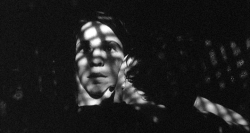
The Addiction
1995 -
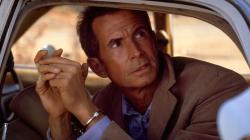
Psycho III
1986 -
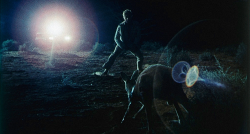
Wake in Fright
1971 -

Blacula
1972 -
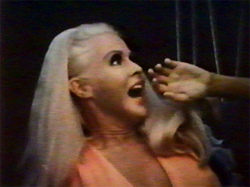
Big Foot
1970 -
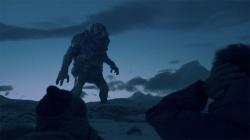
Trollhunter
2010 -
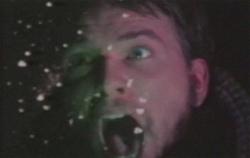
Invasion from Inner Earth
1974 -
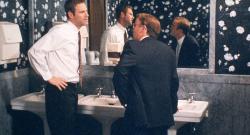
In the Company of Men
1997 -
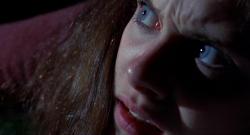
Happy Birthday to Me
1981 -

I Drink Your Blood
1970 -
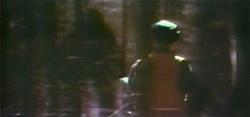
The Legend of Boggy Creek
1972 -

Maximum Overdrive
1986 -
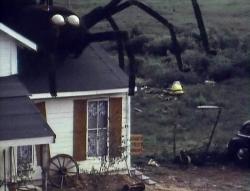
The Giant Spider Invasion
1975 -

Ganja & Hess
1973 -
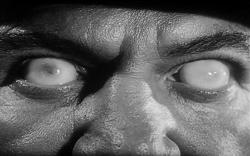
Not of This Earth
1957 -

Let’s Scare Jessica to Death
1971 -
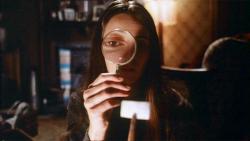
Next of Kin
1982 -
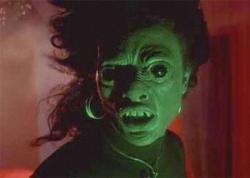
Def by Temptation
1990 -
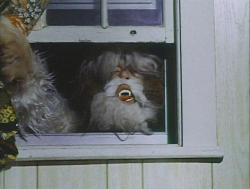
Shriek of the Mutilated
1974 -
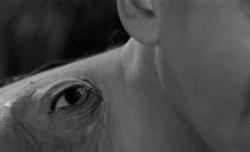
The Manster
1959 -
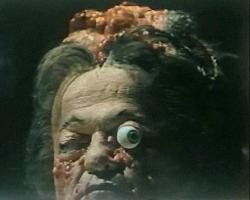
The Alpha Incident
1978 -
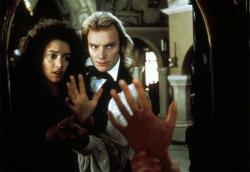
The Bride
1985 -
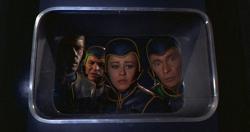
Planet of the Vampires
1965 -

The Hole
2009 -
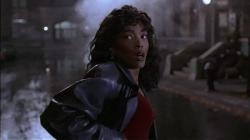
Vampire in Brooklyn
1995 -

Sasquatch: the Legend of Bigfoot
1977 -

Mad Love
1935 -
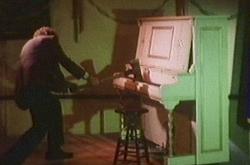
The Demons of Ludlow
1983 -

Habit
1997 -

Elephant
1989 -

The Blair Witch Project
1999
We don’t do comments anymore, but you may contact us here or find us on Twitter or Facebook.



